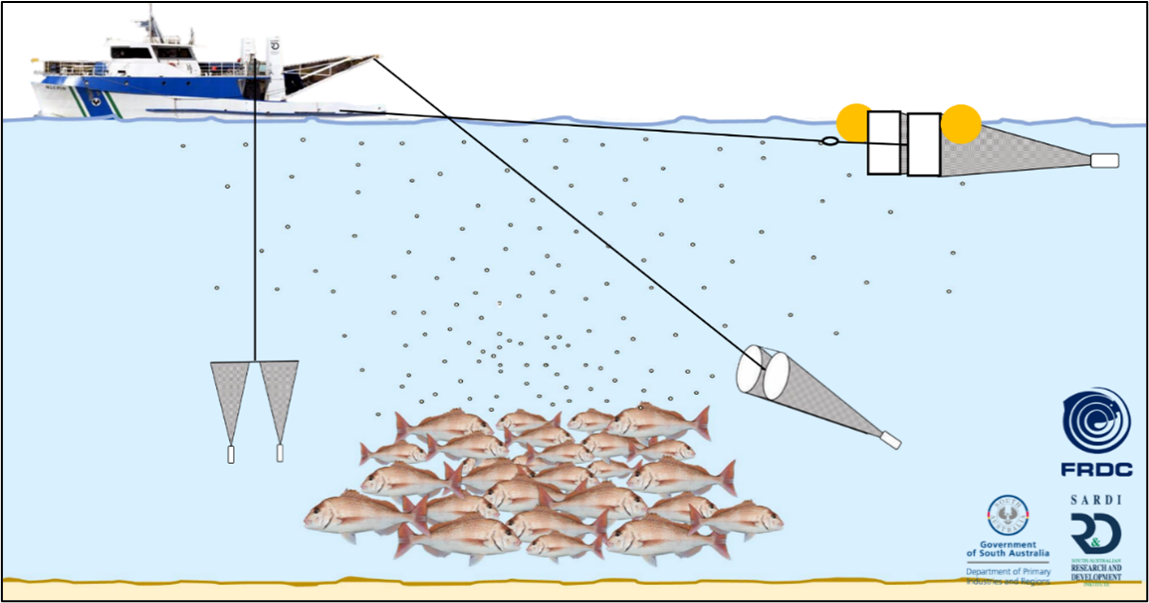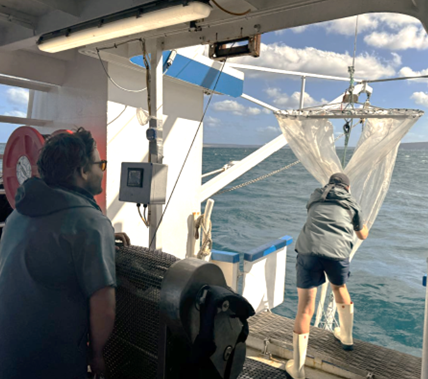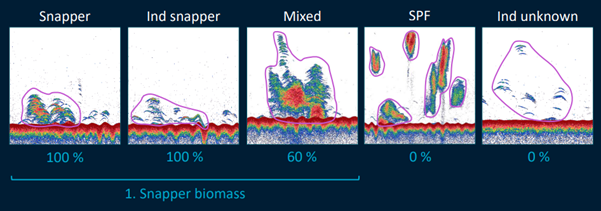One of the highest research priorities for Snapper is the development of reliable independent methods to monitor population trends and inform management decisions. This is part of the focus of the Snapper Science Program – a three-year, $5 million initiative co-funded by the South Australian Government and FRDC.
By Dr Sophie Dolling
Monitoring population size and demographics is crucial for managing fisheries and developing reliable independent methods for estimating the numbers of catchable fish. This need is driven by the aggregating nature of Snapper, which not only makes them susceptibility to being caught, but can also make it look like there are greater numbers than there really are, masking significant declines in the population until it is too late.
Snapper Science Program researchers are evaluating two fishery-independent methods to estimate Snapper biomass: the daily egg production method (DEPM) and hydroacoustic surveys. As a part of FRDC Project No. 2023-091, researchers undertook several experimental field studies in summer 2023-24 to refine the two methods and inform the most appropriate approach to estimate biomass for the 2025 Snapper stock assessment in South Australia.
Daily egg production method (DEPM)
Since 2013, the DEPM has been applied periodically to estimate the spawning biomass of Snapper in South Australia, where it has become an integral tool to monitor population trends and inform stock status. Last year, the Snapper research team undertook trials to improve the DEPM survey design by assessing sampling intensity and three different plankton sampling methods (vertical, oblique, and neuston tows).

‘The daily egg production method (DEPM) refinement project has been an important step in enhancing the application of this method for Snapper to provide the most precise and robust estimate of spawning biomass for the 2025 stock assessment’ says Dr Michael Drew.
Results indicated that despite significant differences in the volume of water filtered by each sampling method, the concentrations of Snapper eggs collected were very similar. Furthermore, the high intensity plankton sampling identified discrete patches of Snapper eggs that aligned with aggregations of spawning fish. These results were consistent between surveys conducted in consecutive months.
Last year’s trial has informed the design of surveys conducted in December 2024 and January 2025 as part of the 2025 stock assessment for Snapper in South Australia. This resulted in a greater spatial intensity of plankton sampling and a vertical tow was used to sample for Snapper eggs at over 500 stations in Spencer Gulf and Gulf St Vincent. Snapper eggs are identified in each sample using a molecular probe developed through FRDC Project No. 2014-019, which contributes to estimating spawning biomass and assigning stock status.

Hydroacoustic and optical surveys
Hydroacoustic techniques have proven an effective method to estimate the biomass of fish aggregations in pelagic and deepwater environments and have more recently been explored as an option for demersal species in coastal waters. These inshore environments pose several additional challenges including mixed species aggregations and avoidance behaviour from vessel noise, as identified in Western Australia through FRDC Project No. 2018-050.
In response to strong interest from the commercial and recreational sectors in South Australia, hydroacoustic surveys were trialled in summer 2023-24 to assess their feasibility to estimate the biomass of Snapper aggregations.
The study demonstrated that aggregations of Snapper were strongly associated with features on the seafloor, with over 90% of Snapper aggregations located within 150 m of benthic structures. In general, these aggregations also included several other species including Yellowtail Scad, Blue Mackerel, and Silver Trevally, which complicated the identification of Snapper.
"Exploring automation in hydroacoustic surveys, using platforms like the Maritime Robotics Otter USV, allows us to scale up our efforts, enhance efficiency, and reduce costs—all while boosting confidence in the accuracy of our estimates", says Dr Ben Scoulding from CSIRO.

To estimate the biomass of Snapper in each aggregation, the acoustic ‘signatures’ were categorised into five groups, ranging from Snapper-dominated aggregations to small pelagic fish (SPF). Underwater video was used to quantify species composition and fish size, integrating acoustic and optical data to estimate abundance and biomass.

Based on these results, the survey design for 2024-25 was revised to sample specific locations that supported Snapper aggregations at high intensity, which increased sampling efficiency. In addition, an uncrewed surface vessel (USV) fitted with the same acoustic equipment was trialled to evaluate the influence of vessel noise on fish behaviour. A total of 40 aggregation sites were surveyed in January 2025, which will provide complementary estimates of biomass that can be incorporated into the stock assessment.

Improved confidence in biomass estimation
Refinement of the DEPM and the development of hydroacoustic methods mark a significant step forward in estimating biomass for Snapper. These advancements provide complementary data sources to estimate biomass and inform stock status in the absence of fishery data. For South Australia, the results of the surveys in summer 2024/25 are integral for the 2025 Stock Assessment, which will identify how the stocks are recovering since fishery closures were introduced in November 2019.
To find out more, head to the SARDI Snapper Science Program webpage - Snapper Science Program - PIRSA





